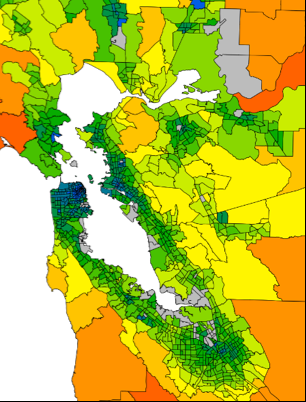California Statewide Travel Demand Model (CSTDM)
HBA Specto Incorporated provided expert advice and management and performed the work in the design, development, calibration, and application of a 5,454 zone statewide travel model representing the entire State of California, including disaggregate tour-based, short-distance personal travel and commercial vehicle models; a disaggregate tour-based long-distance personal travel model working consistently with the short-distance model; a long-distance commercial vehicle model based on PECAS model commodity flow output; and an external vehicle trip model. The model includes representation of 11 modes and 4 time periods on 86,000 nodes and 235,000 links.
Cube Voyager was used for orchestration and trip assignment. Specific modules were prepared in Java and Python. The project included development of the associated transportation networks, including a novel approach to establish a synthetic representation local bus transit service to complement explicit coding of local and regional fixed-route transit (rail and BRT) and air service. The 40,000 households in the 2012 California Statewide survey were processed for model data, including survey expansion using population synthesis.
The short-distance personal travel model considers the daily behaviour of as many as 50 million individuals resident in California, simulating driving license status, auto ownership, work and school locations, number and purpose of tours, time periods for tours and trips, purpose of secondary stops, stop destinations, tour mode and trip mode. The long-distance personal travel model works consistently with the short-distance model; households choose to perform long distance travel based on their accessibility both locally and at the statewide level. The simulated tours include the choice of five purposes, realistic party formation, travel duration choice, destination choice based on multi-modal accessibility including the access and egress mode choices for air and rail. The short-distance commercial movement model simulates both goods and service vehicle movements in a local context. They include light, medium and heavy commercial vehicle movements generated by six categories of industry. These micro-simulation treatments of such a large-scale system as all of California in a practical model are setting new standards.

